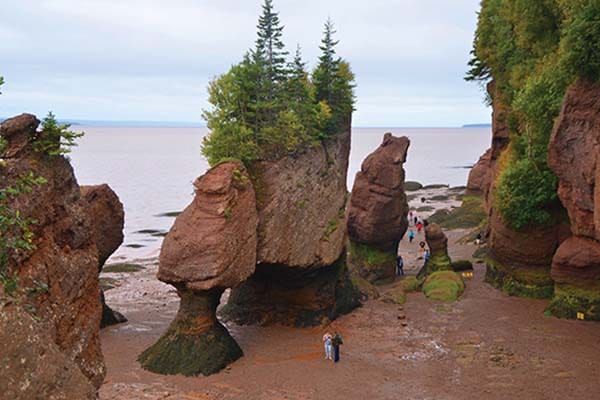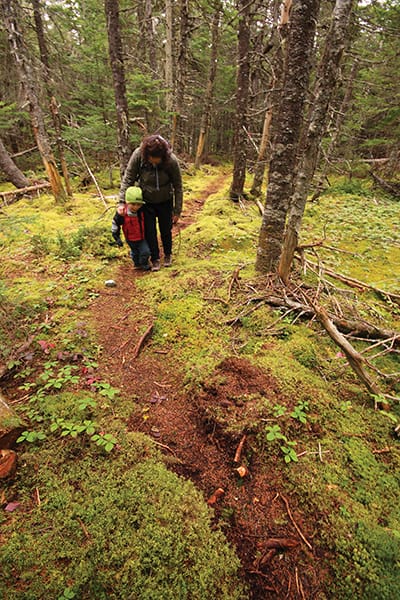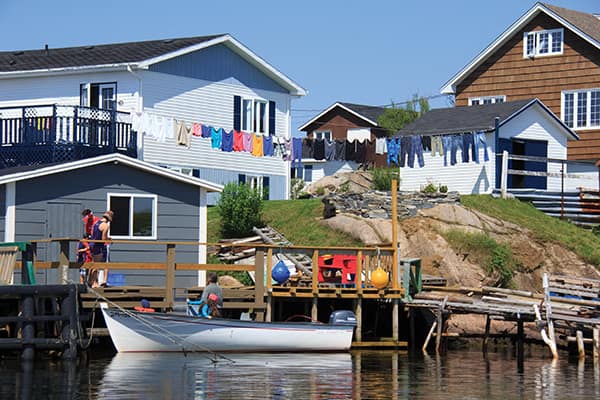A national wonder, ready to explore
A few years ago the Bay of Fundy, became Canada's only entry in the global competition to determine the world's seven top natural wonders (New 7 Wonders of Nature), beating out such iconic Canadian sites as Niagara Falls, the Rockies and Gros Morne National Park.
My wife and I wanted to find out first-hand why the Bay of Fundy had come out on top and last summer we got our chance. A little research made it clear that the Bay of Fundy’s winning status was about far more than just the legendary world’s highest tides; there was a national park, a UNESCO World Heritage Site, a UNESCO biosphere reserve and Stonehammer, North America’s first geopark.

With a list of destinations we headed out for a week of exploration that left us convinced that Canadians had made the right choice in choosing the Bay of Fundy as our greatest natural wonder.
We started our trip by driving to the picturesque town of Parrsboro, about a two-hour drive from Halifax, and followed Highway 209 along the often spectacularly scenic route to Cape Chignecto Provincial Park where we took a short hike along the Red Rocks trail. The cliffs of Chignecto are multi-hued with numerous small waterfalls that bring out the bright colour in the rocks. One could easily spend a week hiking and camping on the many trails of this huge wilderness area.
Our next stop was the UNESCO World Heritage site at Joggins, where we toured the architecturally impressive interpretation centre and learned that the fossils in this area are the most complete record of the Carboniferous or Coal Age in the world. This was followed by a guided tour along the base of the cliffs where fossils were indeed abundant and easy to find, but finders are not keepers—all fossils must remain on site.
Crossing the border into New Brunswick we hit the back roads just outside of Sackville to find the Nature Conservancy of Canada interpretive centre at Johnson’s Mills on Shepody Bay. The upper portions of the Bay of Fundy have been designated a UNESCO World Biosphere Reserve with 50 designated “amazing places” found within its boundaries. Johnson’s Mills is one of these, known as one of the largest gathering spots in the world for migrating shorebirds. In the fall, as the tide rolls out it exposes hundreds of acres of mudflats, teeming with the tiny mud shrimp the shorebirds eat to fatten up for a non-stop trip to South America. On the day we visited there were tens of thousands of birds—more than we had ever seen in one place. It was a truly awe-inspiring sight.
The city of Moncton is one of the best places to observe another of Fundy’s unusual phenomena, the tidal bore. Tidal Bore Park, on the banks of the Petitcodiac River and right in the middle of the Hub City, has an observation platform where we awaited the arrival of the tidal bore, which can be predicted with great accuracy. The bore arrived dutifully if somewhat unspectacularly on time. It is a wall of water that is pushed upstream against the current by the huge force of the tides filling the upper reaches of the bay. Only a week before we visited, a group of professional surfers set a world record by riding the tidal bore for 29 kilometres.
Hopewell Rocks is the most visited tourist site in New Brunswick and for good reason. We had timed our visit so we could take a guided tour of the area when the tide was completely out. Here you are literally walking on the ocean floor amidst huge flowerpot rock formations and below steep cliffs, on which our guide pointed out peregrine falcons that have nested here for years. The neatest thing about Hopewell Rocks is you can come back in eight hours to kayak around the rock formations on water that is up to 45 feet above the ocean floor.
From Hopewell it is a short distance to Cape Enrage so named because of the turbulent waters that flow over an offshore reef—a hazard to marine navigation since Champlain’s time. Now it is a wondrous place high above the waters below where you can rappel down or climb up the cliffs. We chose to take pictures of the scenic lighthouse and have lunch at the Cape House Restaurant where we enjoyed lobster tacos and the best fiddleheads we ever tasted.
Fundy National Park preserves a large tract of wilderness on the Bay of Fundy and offers a myriad of activities. Like Chignecto, we could have spent a week here but limited for time we hiked the short trail to Dickson Falls, which was full after a recent downpour, and drove out to the covered bridge at Point Wolfe—one of the prettiest in New Brunswick.
From Fundy Park the road turned inland through surprisingly large and deserted valleys to Sussex and then back to the coast at St. Martins. If there is a prettier town than St. Martins, with its two covered bridges and lighthouse, we have yet to discover it. The small harbour is the perfect place to get a shot of fishing boats lying on the ocean floor at low tide with the bridges in the background. It is also the starting point for the amazing Fundy Trail Parkway a visionary project that when completed will connect with Fundy National Park and open up some of the wildest parts of the coast. Right now the parkway extends to just past an interpretive centre at Big Salmon River which was once a thriving lumbering community but later a ghost town. Along the way there are numerous turn outs with views of the cliffs and far away beaches that may be the best on the entire Bay of Fundy.

The sea caves at St. Martins are the first of numerous geological points of interest that make up Stonehammer Geopark. A geopark is a UNESCO-endorsed designation that applies to unique geological features; there are a dozen geosites in and around the Saint John area. The best place to learn about the geology of the area is the New Brunswick Museum with its excellent exhibit tracing the geological history of the earth that shows how, over time, virtually every type of rock from the earliest to the latest is found in the immediate area—something only a few places in the world can boast.
We took the time to visit as many of the geosites as possible including Irving Nature Park, Rockwood Park, historic Saint John (whose buildings are mostly constructed from these various rocks), and a guided kayak trip from Dominion Park along the St. John River to view fossilized stromatolites that were a billion, yes a billion, years old! Our final geosite was Reversing Rapids which we exploded through on a jet boat in an adrenalin rush of water, whirlpools and rapids.
We ended the trip by taking the ferry across the Bay of Fundy from Saint John to Digby where we were escorted to the wharf by an entourage of leaping harbour porpoises. The week had gone by in what seemed a flash, but will leave a lifetime of memories.
If all of that was not enough, we also visited one site that we had omitted the previous summer, the Fundy Ocean Research Centre for Energy (FORCE), one of the world’s leading research facilities on tidal power generation. Located just outside Parrsboro, the interpretive centre explains why the Fundy tides are so powerful and have the potential to create energy on an unprecedented scale. For example, one gallon of flowing water has 800 times the energy that has a similar amount of air mass. On the day we visited the area was a hive of activity as huge tugboats maneuvered a “field-scale acoustic Doppler velocimeter” into place between the beach and Black Rock, an outcrop about half a mile off shore. The tidal currents through here are among the strongest in the world and the idea is that any tidal power generator that can survive here can be adapted for use anywhere that tidal power is feasible. The site is worth visiting, not only for its scientific interest but also for the beautiful views—Cape Split and the cliffs of Blomidon are seemingly only a few miles away across the bay.



